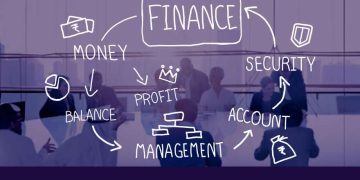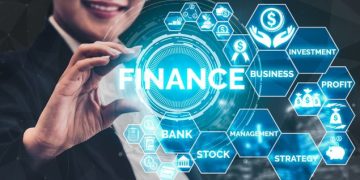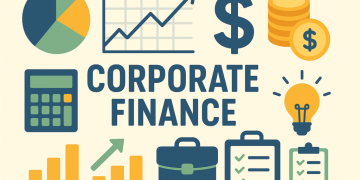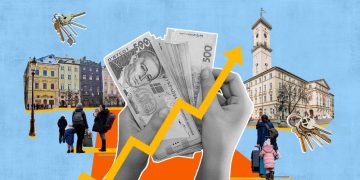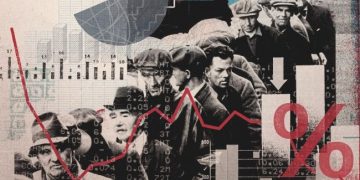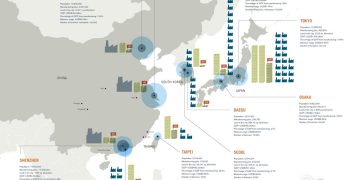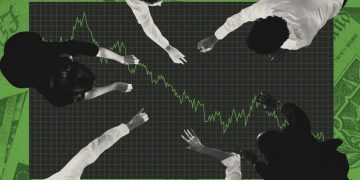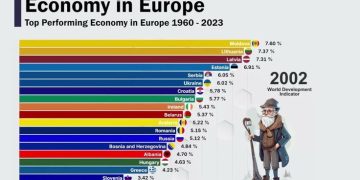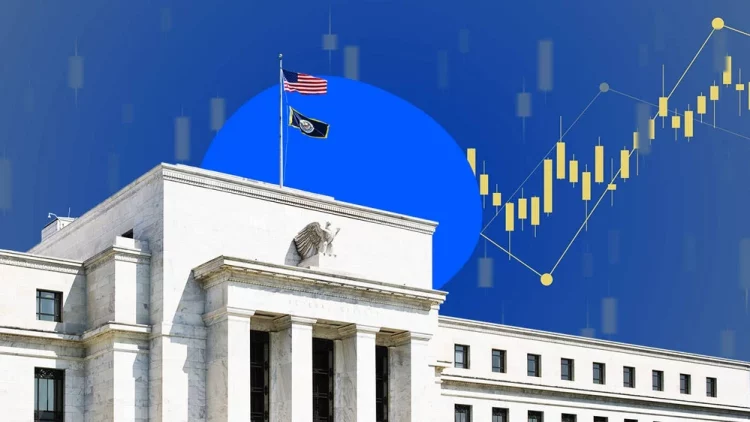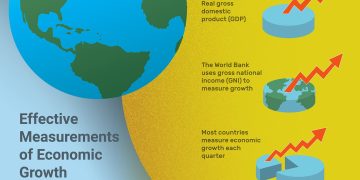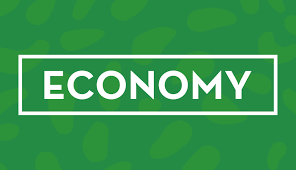Introduction
As the U.S. economy recovers from the pandemic and adjusts to shifting global dynamics, the Federal Reserve’s role in managing economic stability through monetary policy has become more crucial than ever. The decisions made by the Fed regarding interest rates, inflation control, and economic growth will have a profound impact on financial markets in 2025. This article delves into the Fed’s current policy stance, explores its influence on the broader U.S. economy, provides expert analysis on its likely direction, and evaluates the implications for investors across various asset classes.
1. Examination of the Federal Reserve’s Policy Stance and Interest Rate Decisions
Since the onset of the COVID-19 pandemic, the Federal Reserve has implemented a series of unprecedented monetary policies to support the economy, including slashing interest rates to near-zero levels and engaging in massive asset purchases, such as treasury and mortgage-backed securities. These measures were aimed at boosting liquidity, encouraging borrowing, and stimulating consumer spending during a time of economic uncertainty.
However, in the wake of rising inflation in 2021 and 2022, the Fed reversed course and began tightening monetary policy. Starting in 2022, the central bank embarked on an aggressive interest rate hiking campaign to combat inflation, marking the first rate increases in years. By the end of 2023, the Fed had raised its key interest rate to its highest levels in over two decades, bringing the federal funds rate to the range of 5.25% to 5.50%.
Looking ahead to 2025, the Fed faces a critical decision-making juncture: will it continue tightening or will it shift toward easing its policies to accommodate slower economic growth? The Fed’s stance on interest rates is influenced by a number of key factors, including:
- Inflation: One of the primary concerns for the Fed in 2025 will be maintaining inflation at or near its 2% target. Despite some improvements in inflationary pressures in 2023 and 2024, the Fed will need to assess whether inflation remains persistent or if it is, in fact, under control.
- Economic Growth: A balance must be struck between keeping inflation in check and not over-tightening, which could stifle economic growth. The Fed will carefully monitor GDP growth and employment numbers to determine whether further rate hikes are necessary or if a more dovish stance is required.
- Global Factors: The global economic environment, including trade tensions, geopolitical risks, and supply chain disruptions, will influence the Fed’s decisions. The impact of these factors on inflation and growth will need to be incorporated into future monetary policy decisions.
- Labor Market: Labor force dynamics will also play a key role in the Fed’s decision-making process. Unemployment rates, wage growth, and labor force participation rates are all factors the Fed must consider when determining its stance on interest rates.

2. How the Fed’s Actions Are Influencing the Broader U.S. Economy and Financial Markets
The actions of the Federal Reserve ripple through the broader economy and financial markets, impacting everything from consumer spending to the cost of borrowing. The Fed’s interest rate decisions have a direct effect on a range of economic variables, including:
- Consumer Spending and Borrowing Costs: Higher interest rates lead to increased borrowing costs for individuals and businesses. Mortgages, auto loans, credit cards, and business loans all become more expensive, which can dampen consumer spending and investment activity. This has a cascading effect on economic growth, as lower consumption can result in slower production and job creation.
- Inflation Control: The Fed’s primary tool in managing inflation is interest rates. By raising rates, the central bank makes borrowing more expensive, which typically reduces consumer demand and slows price increases. However, excessive tightening can also risk triggering a recession, as economic activity contracts more than expected.
- Financial Markets Impact: Interest rate changes directly affect financial markets, particularly bonds, equities, and real estate. When interest rates rise, bond prices typically fall, as newly issued bonds offer higher yields. In the stock market, higher borrowing costs can lead to lower corporate profits and a decline in stock prices, particularly in interest-sensitive sectors such as utilities, real estate, and financials. On the flip side, when the Fed signals that it is ready to ease, investors often view this as a positive for risk assets, including stocks, as lower interest rates can boost corporate profits and economic growth.
- Real Estate Market: The real estate market is particularly sensitive to the Fed’s interest rate decisions. Higher rates make mortgages more expensive, which can reduce demand for home purchases and slow the housing market. Conversely, if the Fed shifts toward easing in 2025, mortgage rates could drop, stimulating demand for housing and driving up property prices.
- Dollar Strength: The Federal Reserve’s monetary policy also influences the strength of the U.S. dollar. Tightening policies, including higher interest rates, tend to make the dollar more attractive to foreign investors, leading to a stronger currency. A stronger dollar can affect U.S. exports, making them more expensive for foreign buyers, and impacting the profitability of multinational companies.
3. Expert Analysis on Whether the Fed Will Continue Tightening or Shift Towards Easing
Experts are divided on whether the Fed will continue its rate-tightening trajectory in 2025 or pivot toward easing. The following perspectives offer insight into the debate:
Scenario 1: Continued Tightening
Some economists believe that the Fed will remain in tightening mode through 2025, as inflation remains above target levels. These experts argue that while inflation has moderated, it may not be low enough to justify a shift toward easing. With inflationary pressures persisting in some sectors, such as energy and wages, the Fed may feel compelled to maintain its hawkish stance to ensure that inflation is fully under control.
The concern, however, is that further rate hikes could push the U.S. economy into a recession, particularly if consumer spending slows too much. A hard landing would not only hurt the economy but could also weaken the Fed’s credibility in managing inflation without causing unnecessary economic pain.
Scenario 2: Shifting Toward Easing
On the other hand, some analysts expect the Fed to ease its policies in 2025, particularly if economic growth begins to slow significantly. If the U.S. economy experiences weaker-than-expected growth, a pullback in business investment, or renewed global economic challenges, the Fed may opt to cut rates in order to stimulate demand and avoid a recession. Lower rates could boost consumer spending, revive the housing market, and provide liquidity to struggling sectors.
Moreover, some experts believe that inflation may be under control by mid-2025, allowing the Fed to focus on supporting economic growth rather than combating rising prices. The possibility of rate cuts, especially if inflation falls to more manageable levels, could drive a market rally and boost investor sentiment.
4. Implications for Investors, Particularly in Bonds, Equities, and Real Estate
The Fed’s decisions in 2025 will have significant implications for different asset classes. Here’s a look at how investors in various markets might need to adjust their strategies:
- Bonds: Rising interest rates are generally negative for bondholders, as bond prices fall when rates increase. Investors in fixed-income securities should prepare for potentially higher yields in 2025, which may make newly issued bonds more attractive. However, for those holding long-term bonds, the risk of price declines could persist if the Fed continues tightening. Conversely, if the Fed shifts toward easing, bond prices could rise as yields fall, presenting an opportunity for bond investors to lock in higher prices.
- Equities: In the equity market, higher interest rates typically put pressure on stock prices, particularly in sectors sensitive to borrowing costs. In a rising rate environment, investors may seek defensive stocks, such as utilities or consumer staples, which tend to be more stable during times of economic uncertainty. However, if the Fed shifts toward easing, growth sectors like technology may see a boost as lower borrowing costs make it easier for companies to finance expansion. Additionally, investor sentiment could improve in a dovish environment, driving broader market gains.
- Real Estate: Real estate investors are highly sensitive to interest rate changes. Higher rates make mortgages more expensive, which could dampen housing demand. For real estate investors, this means that it may become more difficult to secure financing for new projects or purchases. However, if the Fed eases, lower rates could stimulate the housing market and drive up property values, particularly in cities with strong demand.
Conclusion
The Fed’s monetary policy decisions in 2025 will have a significant impact on the U.S. economy and global financial markets. While experts remain divided on whether the Fed will continue tightening or shift toward easing, investors must remain vigilant and adaptable to these changes. By staying informed about inflation trends, economic growth forecasts, and Fed statements, investors can better position their portfolios in anticipation of the Fed’s next moves. Understanding the potential implications for bonds, equities, and real estate will be crucial for navigating the evolving economic landscape in 2025.

